
Pickleball Techniques and Strategies: from Beginner to Champion
From Beginner to Pro: Ace your Play with our Pickleball Techniques & Strategies to Dominate the Court in your Next Game.
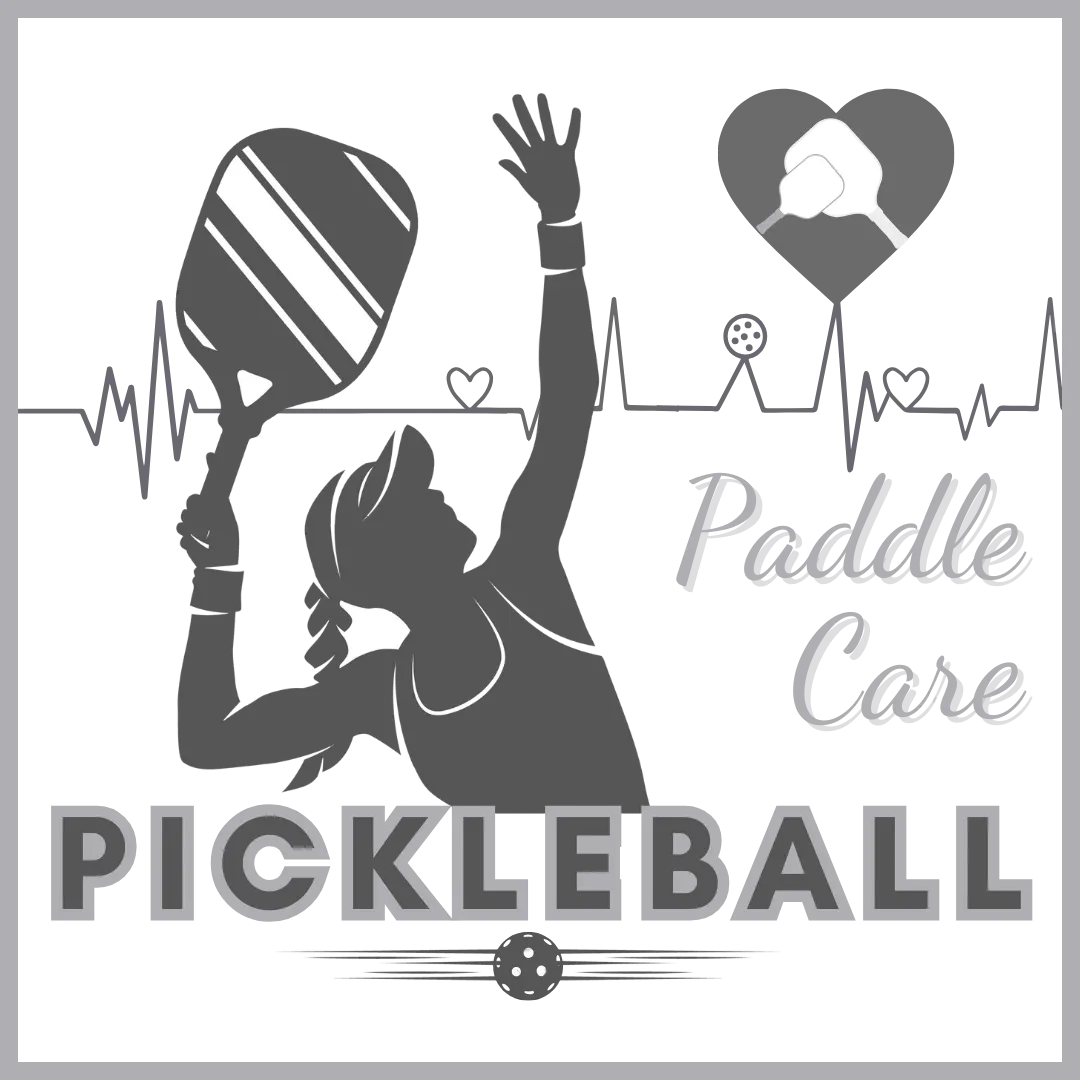 “Take care of your gear and your gear will take care of You”. This insightful advice from Jocko Willink perfectly encapsulates the essence of our newest blog post about Pickleball Paddle. In our previous article, we talked about Pickleball gear and discussed when it’s time to upgrade your Pickleball equipment. This time, we’re shifting our focus to an equally important part of the game– looking after your dependable Pickleball paddle.
“Take care of your gear and your gear will take care of You”. This insightful advice from Jocko Willink perfectly encapsulates the essence of our newest blog post about Pickleball Paddle. In our previous article, we talked about Pickleball gear and discussed when it’s time to upgrade your Pickleball equipment. This time, we’re shifting our focus to an equally important part of the game– looking after your dependable Pickleball paddle.
Hello, Pickleballers! We’re happy to see familiar faces and extend a friendly greeting to those trying Pickleball for the first time. We’re excited to have you here, whether you’re an experienced player looking to improve or a curious beginner eager to learn about this great sport.
As part of this lively Pickleball community, we know how important it is to take good care of your paddle. In this bustling world of Pickleball, your paddles go through a lot– from Pickleball rallies to challenging Pickleball drills. Whether you’re a professional player who loves intense Pickleball games, a beginner, learning from practice, or someone who just enjoys the health benefits of Pickleball, your paddle is your trusted partner on the court.
Today, we’re going to share the tips for caring for your Pickleball paddle. Ultimately, our goal is to keep the Pickleball community injury-free and your paddle prepared for thrilling matches.
So, join us in this adventure of taking care of your Pickleball paddle. We’ll share valuable tips and insights to help your paddle last longer, which will, in turn, improve your Pickleball skills. Get ready for a fun and informative journey through all things Pickleball. Let’s jump right into the topic of paddle care and learn how to keep your favorite piece of equipment in great shape!
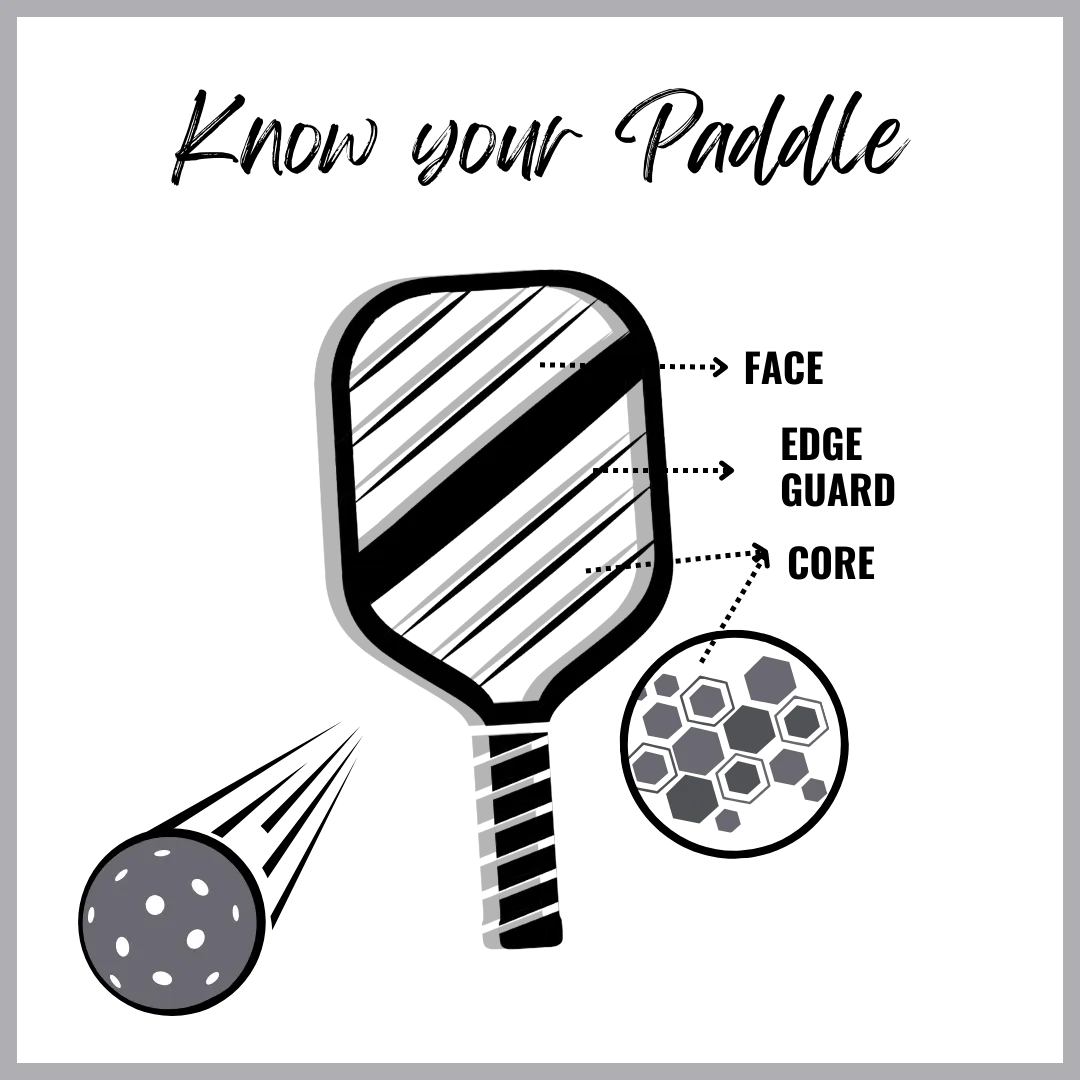 Before we start our paddle care adventure, let’s review some fundamental information about Pickleball paddles. These are the tools that connect us to the game, so it’s essential to understand what they’re made of and how they work.
Before we start our paddle care adventure, let’s review some fundamental information about Pickleball paddles. These are the tools that connect us to the game, so it’s essential to understand what they’re made of and how they work.
1. Core – The paddle’s inner part, called “the core” is made from different kinds of materials such as polymer, Nomex, or aluminum. This core significantly influences the paddle’s power, control, and feel.
2. Face – The part of the paddle that touches the ball is called the paddle face. It’s typically made from materials including graphite, fiberglass, or composite. This, in turn, influences how bumpy or smooth the paddle surface is, how the paddle makes the ball spin, and where it goes when you hit it.
3. Edge Guard – The protective rim known as the “edge guard” is the wrap around the paddle’s edges to safeguard it from damage during play and extend its lifespan.
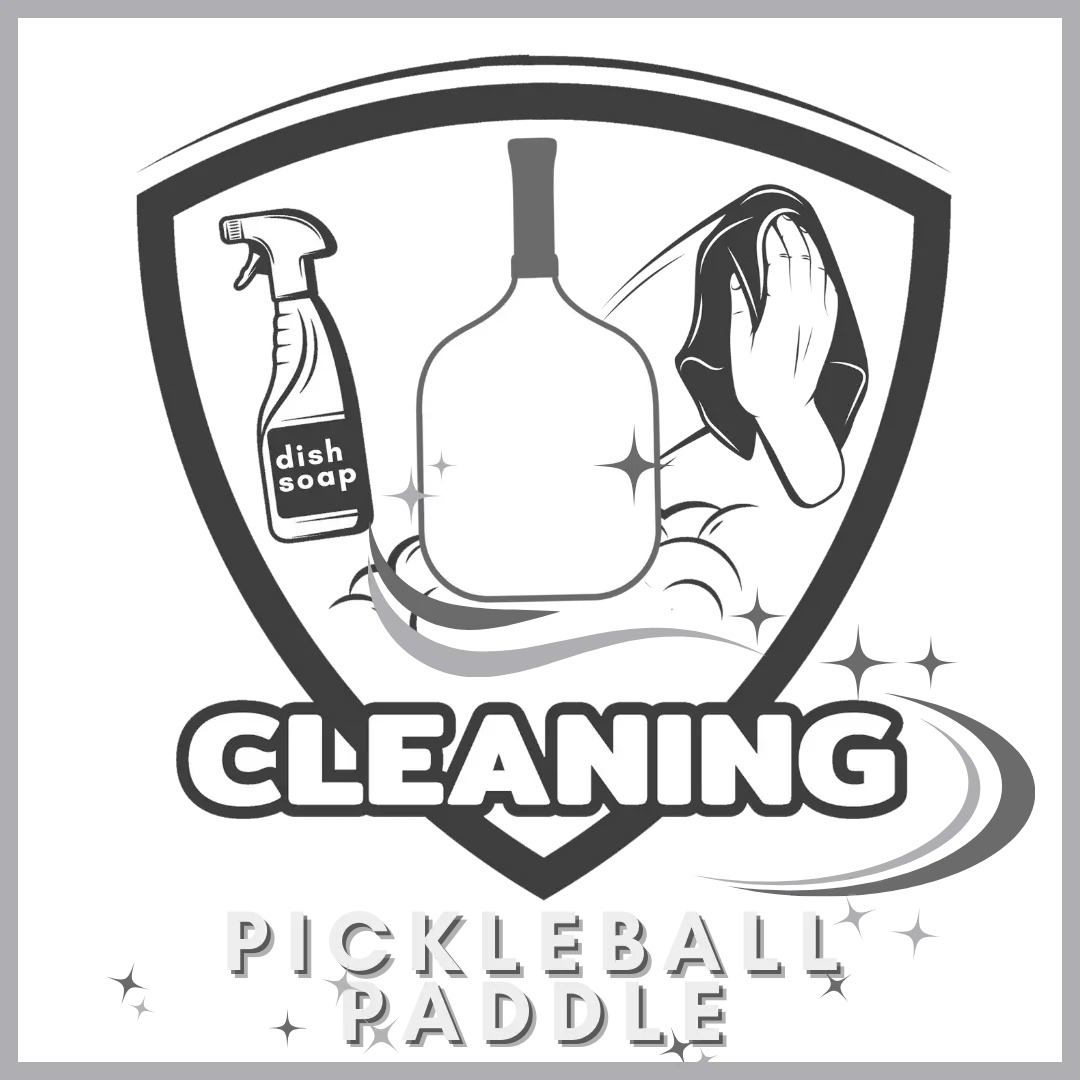 Cleaning your Pickleball paddle regularly is a critical aspect of maintaining its performance and extending its lifespan. By following these tips combined with regular maintenance, you can be assured that your paddle remains in good condition. This will allow you to enjoy a better playing experience in the long run.
Cleaning your Pickleball paddle regularly is a critical aspect of maintaining its performance and extending its lifespan. By following these tips combined with regular maintenance, you can be assured that your paddle remains in good condition. This will allow you to enjoy a better playing experience in the long run.
Cleanliness is Key. After each Pickleball game, use a damp cloth to gently wipe the grip and paddle to remove sweat, dirt, and ball marks. You can also improve your grip’s comfort and security by using grip-enhancing products or overgrips. However, avoid using excessive water when cleaning as it can damage your gear. Keeping the paddle face clean will help it perform well.
In case of stains and residue, mix a bit of mild dish soap with water. Then, use a cloth to gently clean the affected areas. It’s important to rinse thoroughly using a damp cloth or allow it to air-dry afterward to prevent moisture. Make sure to avoid using harsh chemical cleaners as they can harm the paddle’s surface.
Keep your Pickleball paddle indoors at room temperature to protect it. Extreme temperatures, especially heat, can bend or damage the paddle’s core materials over time. Never leave your paddle in direct sunlight or inside a hot vehicle.
Additionally, invest in a cover to safeguard your paddle when not in use to keep it safe from dust, dirt, and unexpected harm.
Store your paddle upright, either with a stand or by leaning it against a wall, particularly to maintain its shape and strength. Prolonged exposure to extreme cold can also harm your paddle’s performance, so avoid freezing environments for extended periods.
Chapter IV – Mind the Edge Guard
To keep your paddle lasting longer and performing better, make sure you protect its edge guard. After your Pickleball game, clean your paddle with a damp cloth to remove sweat and dirt and prevent the edge guard from wearing out too soon.
Handle your paddle with care and avoid striking it against hard surfaces since this could harm the edge guard. Additionally, inspect your edge guard for signs of wear, cracks, or peeling. If you come across any damage, address it right away to prevent further deterioration.
Many dedicated players use edge tape to add a little more security to their equipment. It not only protects your paddle but also adds a personal touch to your paddle’s design.
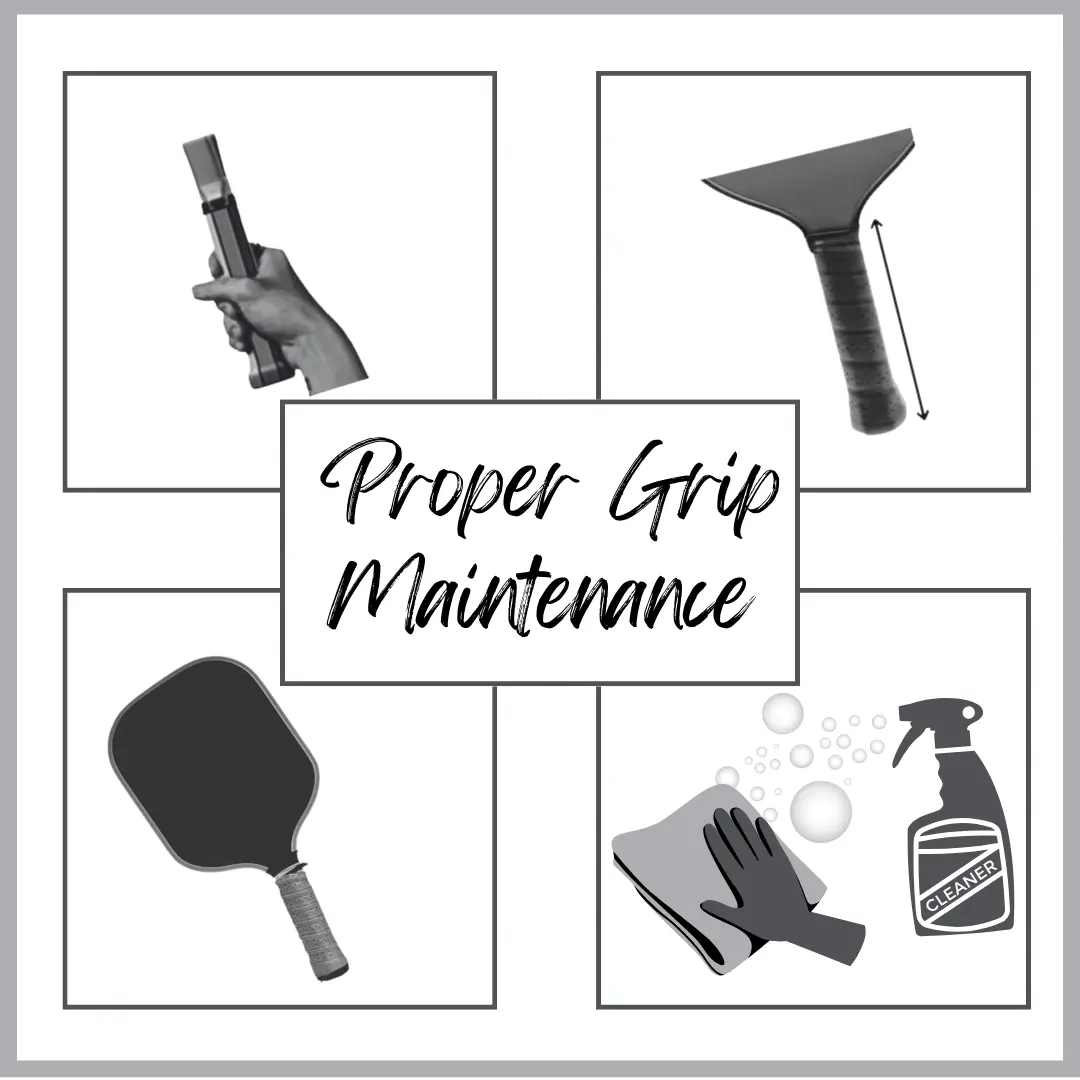 Maintaining a proper grip for your Pickleball paddle allows you to have control and power and keeps you free from injury. Make sure your paddle handle fits your hand comfortably. Holding a paddle that doesn’t match your hand size can not only make you uncomfortable but also reduce your control. Instead, use thin and cushioned overgrips on your paddle’s existing handle since overgrips soak up sweat and improve your grip. Just don’t forget to change them regularly to keep them working well.
Maintaining a proper grip for your Pickleball paddle allows you to have control and power and keeps you free from injury. Make sure your paddle handle fits your hand comfortably. Holding a paddle that doesn’t match your hand size can not only make you uncomfortable but also reduce your control. Instead, use thin and cushioned overgrips on your paddle’s existing handle since overgrips soak up sweat and improve your grip. Just don’t forget to change them regularly to keep them working well.
Routinely wipe your paddle grip with a damp cloth or grip cleaner due to sweat, dirt, and hand oils that collect there. Let it dry completely before your next game. Note that you can also rotate your handle slightly between points to prevent one side from wearing out faster. Some players use grip boosters like powder to keep their hands dry and hold the paddle firmly, especially in humid conditions.
Always check your handle for any signs of damage including cracks, peeling, or wear. Replace the handle when it begins to deteriorate to keep your control in top shape.
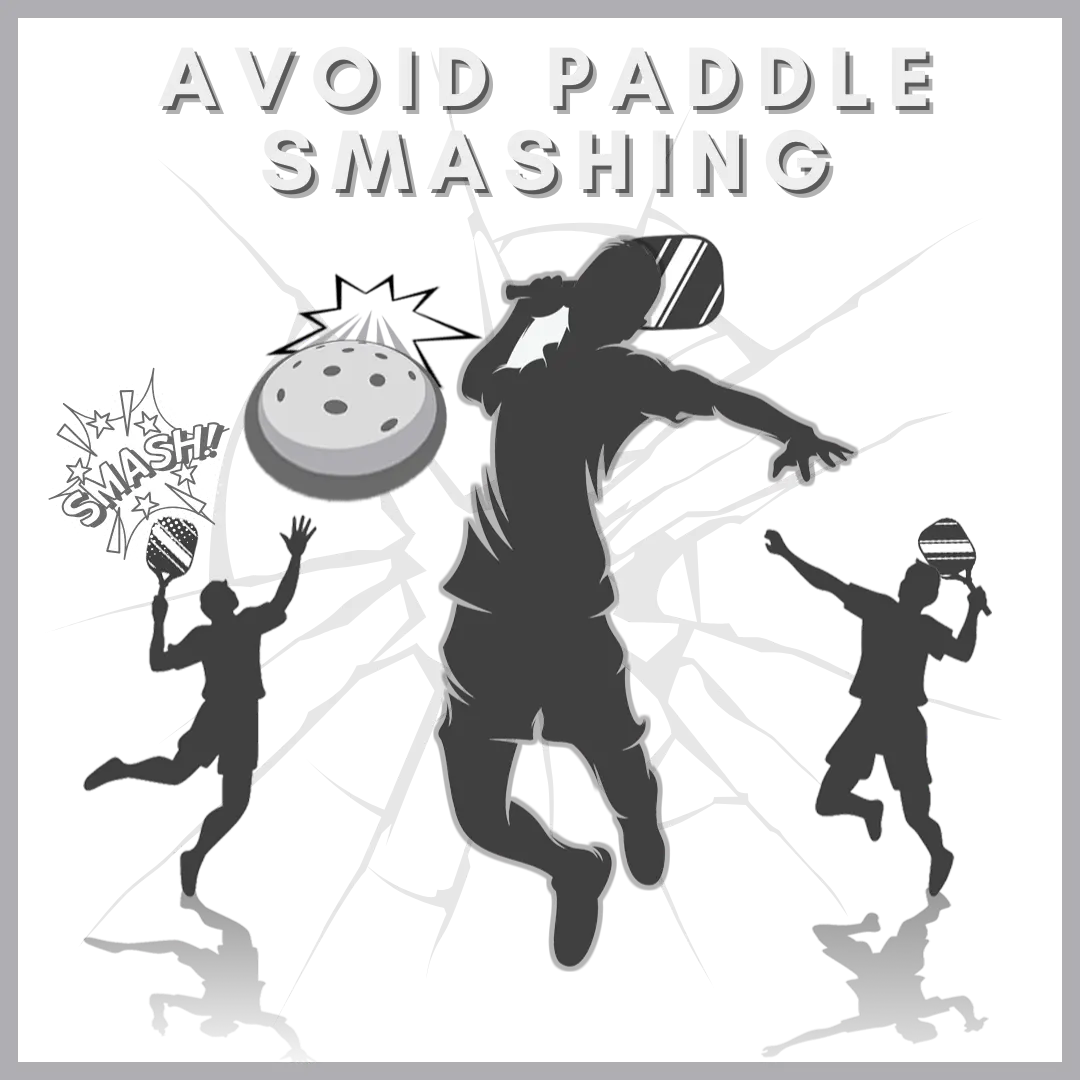 Looking after your Pickleball paddle not only saves you cash but also boosts your play and encourages sportsmanship on the court. While smashing overhead shots can be strong, they also come with a higher risk of harming your paddle. Instead, use them only occasionally when you have a good chance of landing a point.
Looking after your Pickleball paddle not only saves you cash but also boosts your play and encourages sportsmanship on the court. While smashing overhead shots can be strong, they also come with a higher risk of harming your paddle. Instead, use them only occasionally when you have a good chance of landing a point.
At the same time, focus on making controlled shots instead of wild, hard swings. Accuracy and positioning are often better than pure power. Good footwork can help you position yourself correctly for shots. That way you won’t need to lunge or swing aggressively during play.
Keep your cool on the court; smashing your paddle in frustration is not only harmful to your gear but also goes against good sportsmanship. Think about getting some lessons or practice to get better at playing Pickleball. Practice can assist you in hitting the ball more precisely and lowering the chances of making errors that might damage your Pickleball paddle.
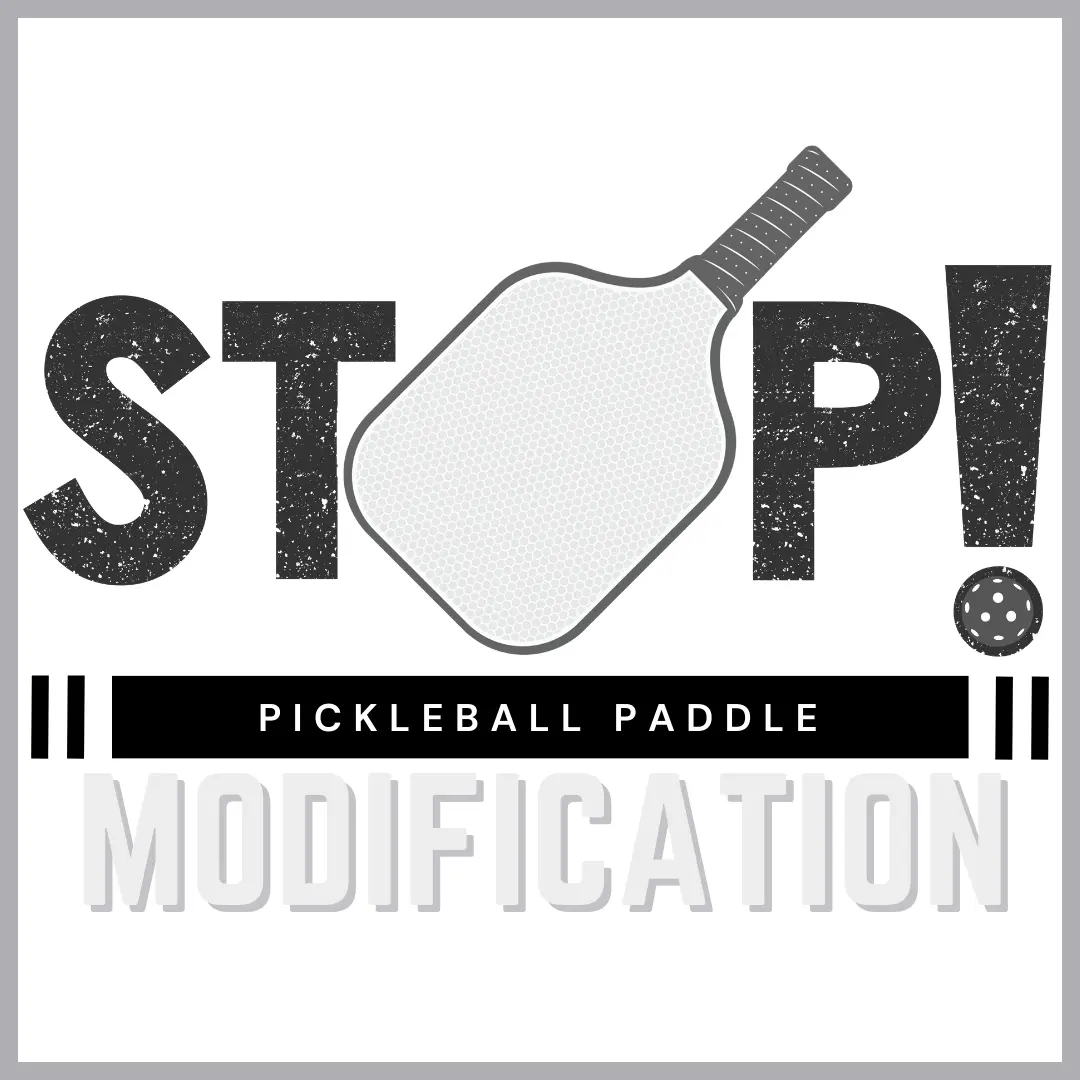 It’s important to note to not alter your paddle in ways that could cancel its warranty from the manufacturer including not changing the core or surface of the paddle. Not only it is important to maintain the integrity of the game, but it also ensures fair play.
It’s important to note to not alter your paddle in ways that could cancel its warranty from the manufacturer including not changing the core or surface of the paddle. Not only it is important to maintain the integrity of the game, but it also ensures fair play.
Keep in mind that the integrity of the game relies on every player’s commitment to following the rules. So, if the grip on your paddle is worn out, replace it with fresh, high-quality grip tape for better control and comfort.
Chapter VIII – Regular Check-Ups
Just as you’d schedule a doctor’s appointment for a check-up, it’s worth having a professional inspect your paddle in order to maintain its performance and condition. How often you complete these checks can depend on your playing frequency and storage conditions. As a result, if you regularly check and take good care of your Pickleball paddle, it will last longer and perform well.
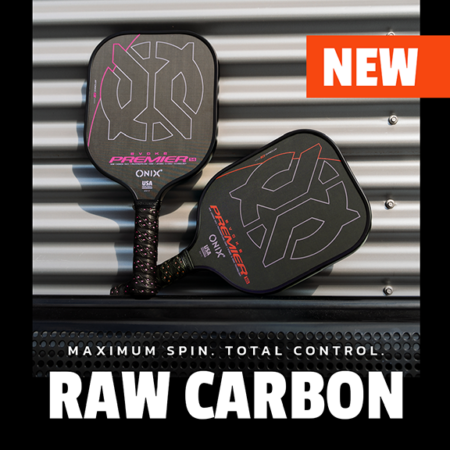 In the world of Pickleball, where players come together for fun and competition, looking after your Pickleball gear is of the utmost importance. It’s not only about keeping your paddle in good shape but also about keeping everyone safe. A damaged paddle can not only hurt your performance but also endanger others when the game gets intense.
In the world of Pickleball, where players come together for fun and competition, looking after your Pickleball gear is of the utmost importance. It’s not only about keeping your paddle in good shape but also about keeping everyone safe. A damaged paddle can not only hurt your performance but also endanger others when the game gets intense.
So, as we wrap up this blog for Pickleball paddle, let’s keep in mind that these easy actions are not only about upkeep but also about being responsible players. When we handle our paddles gently and considerately, we not only make them last longer but also make the game safer and more enjoyable for everyone.
As you step onto the Pickleball court with a paddle in good shape, you’ll be ready to face every challenge ahead. Whether it’s for a friendly match or a serious competition, your paddle is indeed like a natural part of you. It helps you make accurate shots and hit strong dinks.
Make sure to embrace these tips in your Pickleball journey. Let’s get out there, enjoy the game, and make every moment on the Pickleball court a good one!
Thank you avid readers for your unwavering support. Your endless support fuels our motivation to strive for excellence, and we can’t wait to bring you even more engaging content in the future.
Until next time, happy Pickleballing!!

From Beginner to Pro: Ace your Play with our Pickleball Techniques & Strategies to Dominate the Court in your Next Game.

Step into the spotlight, make a lasting impression, and become a trendsetter on the Pickleball court with our Pickleball apparel guide.

Thinking about the perfect gift for someone just starting in Pickleball? Discover our Pickleball gift guide tailored for beginners. Look no further.

Ever wondered how your Pickleball style could reach new heights? Learn the secrets of success with the “Pickleball Accessories To Enhance Your Play and Ace Your Style”.
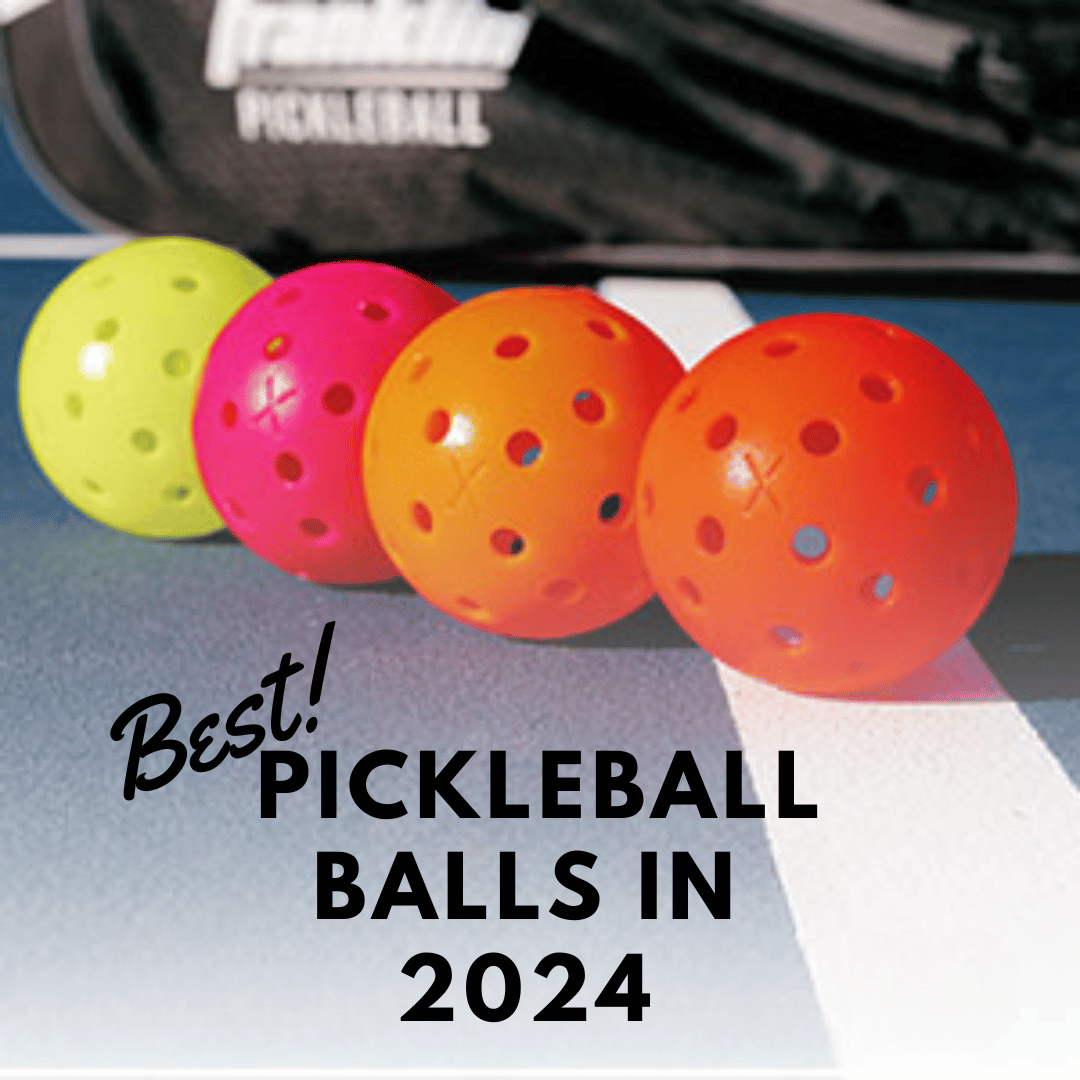
Are you seeking the perfect Pickleball balls for 2024? Let’s find out why they’re the “Best Pickleball balls for 2024”.
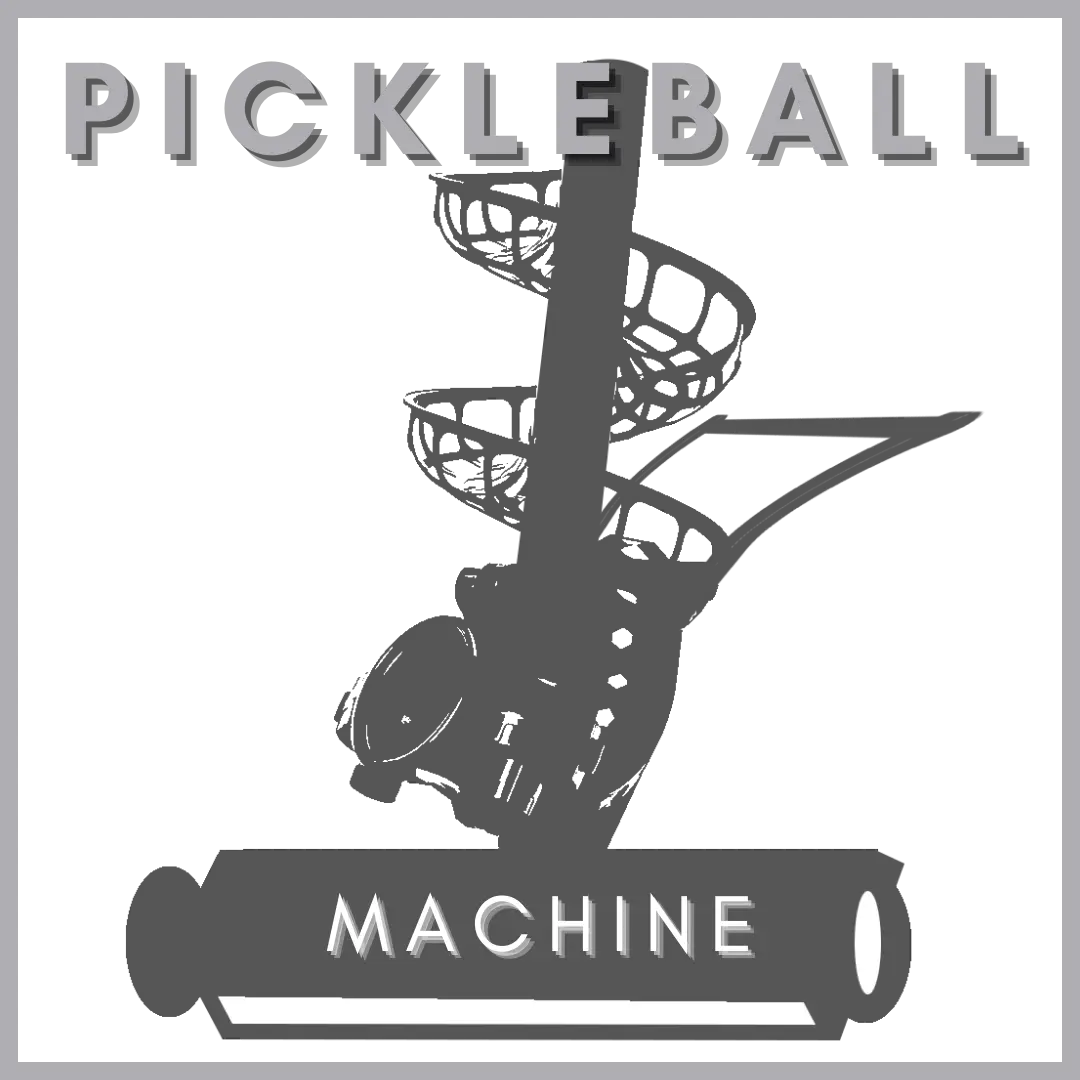
Looking to boost your pickleball skills? How can Pickleball Machines serve as your secret weapon?
If you would like us to feature your brand in our upcoming Pickleball blogs, Collaborate with Us. We’d love to have you featured.